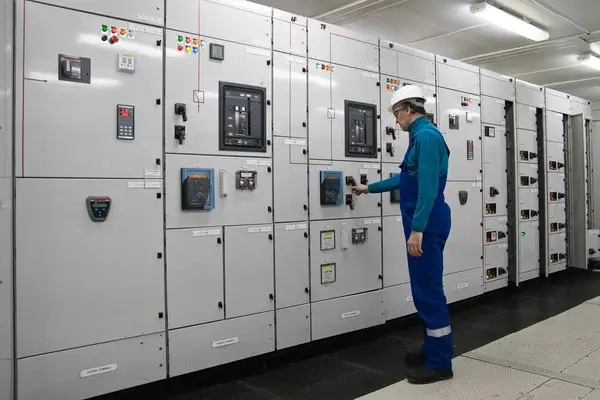How Can Technology Help Reduce The Number Of Car Accidents?

Car accidents have always been an unfortunate reality of modern life. Despite our best efforts to reduce their number, the sheer volume of cars on roads nowadays means that car accidents are still a frequent occurrence. That’s why new technologies are being developed to address this growing problem and help to make the roads safer for everyone. In this blog post, we’ll explore some innovative ways that technology can be used to reduce the number of car crashes and improve road safety. We’ll also look at how these advancements in safety are helping bring down accident-related fatalities across the world. So let’s get started!
Understanding the Causes of Car Accidents and How Technology Can Help
The causes of car accidents are, unfortunately, numerous and varied. From driver distraction to bad weather, the number of factors contributing to the likelihood of a collision can seem overwhelming. Fortunately, however, technology is providing multiple solutions that can help prevent car accidents and make roads safer. Systems like collision avoidance and adaptive cruise control use sensors and cameras to identify potential obstacles in advance and alert drivers before they have time to react. Additionally, analytics-driven safety protocols are increasingly being implemented in many vehicles in order to capture data on driving behavior and surface potential areas for improvement where needed. With an effective combination of proactive measures and data-driven insights, we have an opportunity to reduce the devastatingly high number of car accidents happening across the country each year.
Exploring Technologies That Help Reduce or Mitigate Risk
Risk mitigation is an important part of managing safety in every industry. Thanks to developments across a range of technologies, organizations can now find and quantify risks more quickly and accurately than ever before. Tools such as AI-driven analytics and visualization engines can provide critical data on potential risks, allowing analysts to make better decisions on how best to proceed in mitigating them. Automated monitoring solutions can be set up to track operational results, providing real-time insight into the environment where business is conducted. Taken together, it is clear that technology has made a major impact when it comes to reducing or mitigating risk. Not only do these tools save money, but they also promote a safer environment that keeps everyone involved safe from harm.
Examining Connected Cars and How They Could Improve Road Safety
Automotive technology is advancing at a rapid pace and connected cars provide just one example of their incredible potential. Connected cars utilize modern computer systems, GPS, and internet-enabled devices to create a sort of ‘web’ between vehicles, infrastructure, and other entities on the roads. Through this web, it is possible for vehicles to share real-time data with each other in order to improve road safety. There are multiple ways that this can work – for instance, an emergency warning system could be triggered when one vehicle brakes unexpectedly due to an obstacle or hazard ahead, notifying other nearby drivers of the danger. From listening out for smaller incidents such as bumps or traffic buildups, connected cars also have the potential to alert authorities of bigger incidents such as accidents much faster. Road safety organizations have been quick to jump onto the benefits connected automobiles offer and have been integrating them into existing initiatives around shared infrastructure, smart cities, and autonomous driving. There looks set to be no turning back from here as we move forward toward a future where cars are truly interconnected – potentially revolutionizing road safety as we know it.
Assessing the Potential of Autonomous Vehicles for Reducing Crashes
Autonomous vehicles are being looked at as a potential solution to reduce the high incidence of car crashes. This technology is still in its early stages, but with advancements in technology, it could one day lead to a drastic reduction in traffic fatalities. Autonomous vehicles offer many advantages over driver-operated cars, such as improved safety features and better reaction speed. However, understanding how this technology works is essential for car accident lawyers who must assess the decisions made by autonomous vehicles that were involved in accidents to determine the cause of crashes. Overall, autonomous vehicles have great potential to drastically reduce the number of crashes on our roads if they are implemented correctly and all safety measures are followed closely.
Discussing Other Technological Solutions for Keeping Drivers Safe
Automated safety systems in cars have come a long way in terms of preventing motor vehicle accidents. Recent innovations like lane departure warning systems, electronic stability control, and collision mitigation all offer impressive solutions for keeping drivers safe, however, there are other solutions that should also be considered to ‘up the ante’ even more. These include using technology to monitor driver behavior: from recording how fast a vehicle is being driven, to having an expiration date for any license without annual refresher courses. Technological solutions should also be employed with semi-autonomous cars so that the car can take control and drive itself safely if it detects that the operator has underestimated their driving abilities or potentially become incapacitated while behind the wheel. Finally, introducing similar safety improvements at no extra cost in mass-market vehicles is vitally important not only to strengthen public trust in automated technologies but also to increase the overall rate of adoption.
Considering the Challenges Facing the Implementation of Vehicle Technologies
In the world today, we are seeing an increase in the utilization of vehicle technologies. They promise to improve safety on the roads and make transport more efficient. However, their successful implementation presents some challenges as well. These include ensuring that all vehicles on the road have updated software and mechanisms, as well as streamlining cross-platform compatibility to ensure that various types of vehicles can communicate with one another. Moreover, there are concerns about users having access to personal data when using transport technology and how this data is securely stored and utilized. Additionally, certain vehicle technologies require costly investments such as infrastructure construction, technological upgrades, and complex maintenance procedures which may prove a deterrent to countries that are still developing. Despite these challenges, if successfully implemented vehicle technologies have the potential to revolutionize transportation on a global scale.
By considering the complexities surrounding the causes of car accidents, and utilizing new and innovative technologies available today, we can continuously move forward in potential vehicle safety progress. Various solutions have been offered that have helped reduce the risk on our roads: connected cars, autonomous vehicles, those with driver-assistance systems, as well as other measures such as reinforcement learning and airbags. Though many of these technologies already exist or are in different stages of development and testing, their widespread implementation could be hindered by difficulties like cost or cyber security risks. Regardless if these ever become commonplace on our roads or not though, educating ourselves on future advances will always be an essential part of helping to keep drivers safe!







